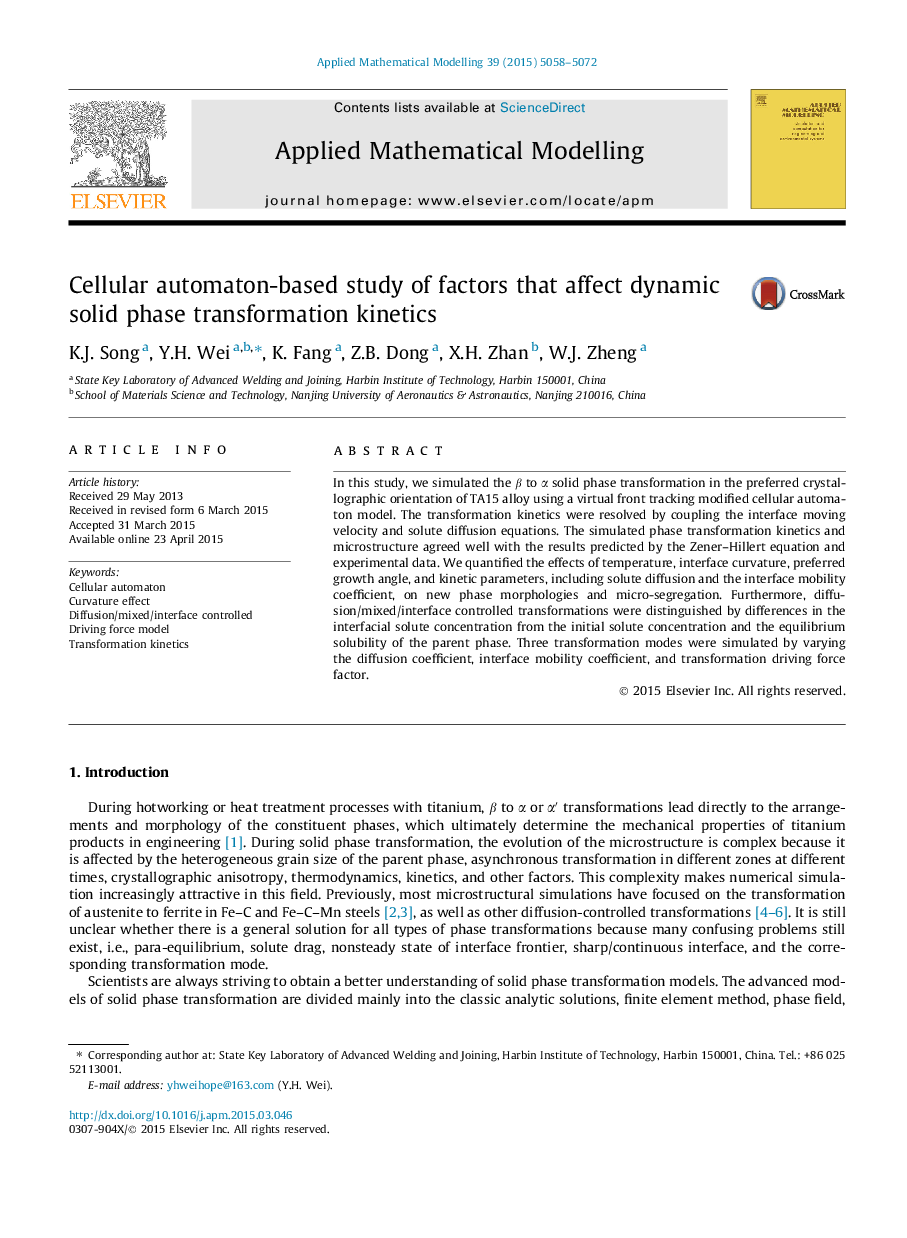| Article ID | Journal | Published Year | Pages | File Type |
|---|---|---|---|---|
| 1703284 | Applied Mathematical Modelling | 2015 | 15 Pages |
Abstract
In this study, we simulated the β to α solid phase transformation in the preferred crystallographic orientation of TA15 alloy using a virtual front tracking modified cellular automaton model. The transformation kinetics were resolved by coupling the interface moving velocity and solute diffusion equations. The simulated phase transformation kinetics and microstructure agreed well with the results predicted by the Zener-Hillert equation and experimental data. We quantified the effects of temperature, interface curvature, preferred growth angle, and kinetic parameters, including solute diffusion and the interface mobility coefficient, on new phase morphologies and micro-segregation. Furthermore, diffusion/mixed/interface controlled transformations were distinguished by differences in the interfacial solute concentration from the initial solute concentration and the equilibrium solubility of the parent phase. Three transformation modes were simulated by varying the diffusion coefficient, interface mobility coefficient, and transformation driving force factor.
Related Topics
Physical Sciences and Engineering
Engineering
Computational Mechanics
Authors
K.J. Song, Y.H. Wei, K. Fang, Z.B. Dong, X.H. Zhan, W.J. Zheng,
